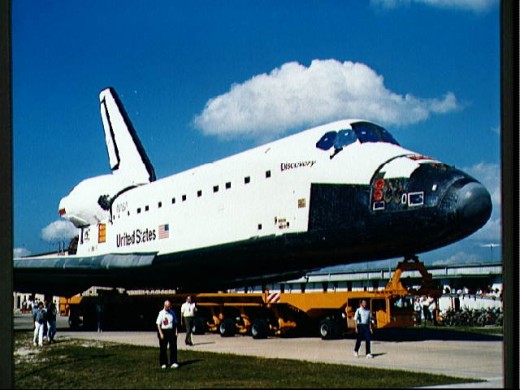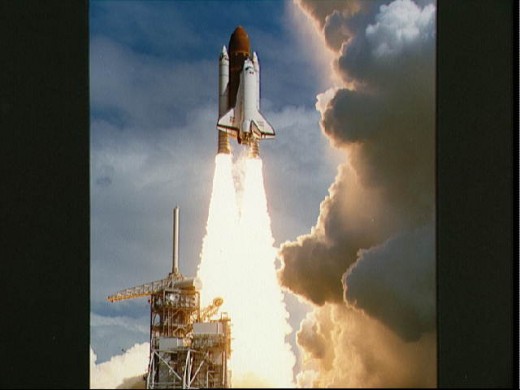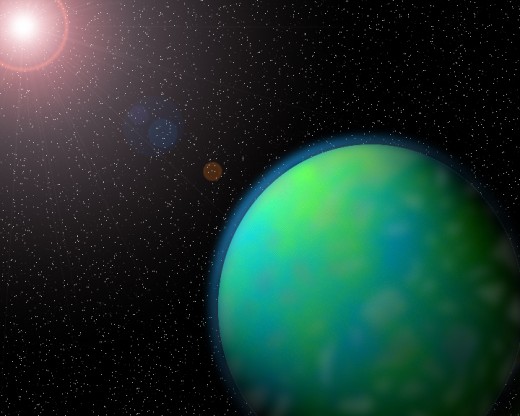Faster Than Light Travel

The Problem with FTL (Faster than Light) Travel
We've seen it on Star Trek, we've seen it on Star Wars, and heck, we've probably seen it on every Science Fiction show or in the pages of every novel that takes its readers for an interstellar romp around the galaxy or the greater area of the universe itself- Faster than Light travel. It's a mainstay of the genre, a staple, and it's a must for any star system-hopping epic that doesn't want to leave its intrepid crew of laser-wielding space adventurers in a hold playing poker for five years while they outrun the bad guys on a routine cruise to the nearest star system.
But therein lies the problem, according to the revered Albert Einstein (a name practically synonymous with genius even now, decades after his death) and his groundbreaking theory of relativity, the light barrier is a fixed boundary, with time dilating as the speed of light approaches. This means that the faster we go, the slower time passes for us, making every minute or hour we experience at a fraction of light speed equal to days, weeks, or even years everywhere else in space- and even then, you're still two to four years of travel time inside the ship to the nearest star. So how do we travel faster than light? Well, scientists currently have a couple models on the table.

What's on the Table
The current, most widely accepted model sounds straightforward and relatively simple. First, we need a time machine- take a planet, roughly fifty times the size of Jupiter, and use it like a boat anchor to keep your "ship" from getting sucked over the edge of a black hole. Then, using that energy, (assuming you're generating more than an infinite amount of energy during this whole operation) you simply pick a direction and go. Sounds improbable, right? Practical applications might be along the lines of using an artificially generated singularity (i.e. a black hole) and a large quantity of superdense matter (like Neutronium,) to accomplish the same thing, using gravity itself to both generate usable energy and propel the body of a ship in a chosen direction. Another trick which is begging to be tried was made popular in Frank Herbert's Dune series- traveling without moving, they call it. By bending the very fabric of space, we can theoretically bring point A and point B together, forcing them to exist in the same place for just enough time for our little ship to jump over. Unfortunately, this too is supposed to take an incredible amount of energy, something on the order of ten times that currently stored in every atom in the universe.
But what do we know, right? Einstein's theory was written in 1905, over a hundred years ago, and works off the theories of Galileo, replacing parts of Newton's theories. (Talk about some old stuff!) And it's not like Einstein's works are stainless- already disagreements are cropping up in the scientific community in regards to the incompatibility of old Albert's theories with quantum mechanics and other areas of both proven and theoretical scientific thought. It all comes down to a coin flip and a camp at this point, but then, consider for a moment the breaking of the sound barrier. For a long time, skeptics said that it could not be done by a manned vehicle- it was said that we as a species were just not meant to travel faster than sound itself, and that even if we were to break that barrier, the results would be catastrophic, utter loss of control and imminent death and such. And then in 1947, Chuck Yeager proved them all wrong by achieving ultrasonic flight in an experimental Bell X-1 rocket plane.
So perhaps one could liken the scientists of today to a pack of monkeys, if you will, all debating amongst one another and working up calculations that, to more technologically advanced observers, might seem rudimentary, archaic, and uncreative at best. They form two camps, one firmly entrenched in the belief that a particular speed barrier cannot be broken, while the other believes that it can. Using a wooden wheel painstakingly handcrafted specifically for the equations and resulting tests, they attempt to discern how much energy is required to propel the wheel to say, supersonic speeds, using their current mode of thrust, which would be inertia. (i.e. pushing it down a slope.) The first camp argues that the wheel will need an incredibly long slope to reach a high enough rolling speed to actually break through the sound barrier, and that even if it were to do so, the resulting stresses on the wheel itself would tear it apart in the process, making actual use for transportation impractical. The second camp, however, maintains that a long enough, smooth enough slope does exist or can be created, allowing the wheel to achieve those speeds without undue harm.

A More Realistic Approach
Of course, looking at this from our standpoint, we might laugh about using something as primitive as simple inertia as a drive mechanism, considering that we have advanced to the point where internal combustion has become so commonplace, but then, while more effective than using inertia, internal combustion could ultimately be seen as just as primitive a form of propelling an object from point A to point B. We're using fire instead of brute force, steel and aluminum instead of wooden wheels, and those tiny differences have allowed us to break the sound barrier. It may take another incredible innovation in transportation technology to provide us with the means and the energy necessary to break that next incredible barrier, light. Who knows, maybe we'll find a new form of matter or wave or something totally different that actually moves faster than light, and that discovery will lead to a whole new world of theory and technology that we can only as yet dream about.
Barring such miracles, one might consider another, more philosophical side of the argument. While scientists tussle over the physics, energy, and mathematical equations involved, looking for new ways and new angles to approach the problem from, men and women of the spiritual persuasion ponder the reasons the laws themselves may be in place, perhaps even permanently, asking questions like "are we meant to?". Therein truly lies the ultimate question.

Now, most people of a scientific mindset would brush such a question off as the meaningless entertaining of a fantasy, or as something else equally unimportant, but consider for a moment the implications of suddenly being able to break the light barrier and overcome the dilation and distortion of time that is assumed to go with it. With unlimited and immediate access to the stars, mankind could run away from its pollution problem on Earth, start interstellar wars with other spacefaring species, and open up a whole host of worlds to the cruel fists of greedy opportunists and entreprenuers. Like the missionaries of the past, men and women of a hundred or more religious persuasions would be free to set upon entire worlds of "unindoctrinated heathens," and the endless seas of the stars would be a frontier ripe for the birth of a new form of piracy. No matter how you look at it, as with every new frontier, there is as much potential for bad as there is for good- doubtless, it could be argued that running away is not an option here. We're stuck on Earth, and if we trash it, we're stuck with it; the light barrier just exists to keep us here and help us learn our lesson as a species.
So perhaps like the sound barrier, the "light barrier" will one day be broken, and mankind will find it's place among the stars, bending the laws of physics and Einsteinian theory just enough to make the little jaunts around Tau Ceti and Alpha Centauri that we dream about possible, but who knows. Maybe Einstein was right after all, and the fantastic speeds of Star Wars and Star Trek are nothing more than a dream. One thing's for sure; as long as mankind is kept on a "look but don't touch" policy with the stars, Science Fiction writers will keep dreaming up new ways to change that, and researchers will struggle with new ways of making those changes into solid reality.










